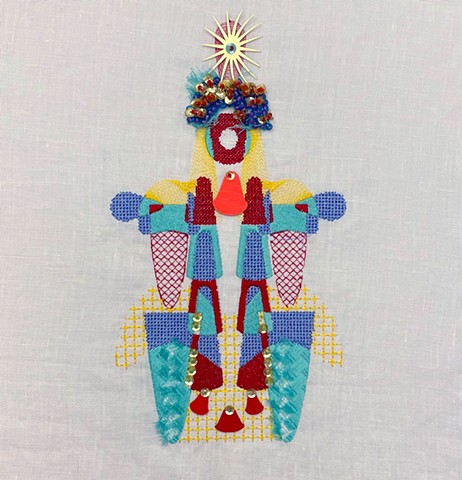My practice is deeply rooted in the diverse traditions of textile craftsmanship. Utilizing pliable surfaces, paper and cloth, I delve into a landscape intricately woven with familial history, labor narratives, and societal dynamics.
As both an artist and educator, I'm fascinated by the profound significance of textiles in design. These fibers, often unnoticed yet omnipresent, permeate various aspects of our lives—from architecture to apparel, from art to interiors. Within their abundance lies potential for addressing cultural, environmental, and economic challenges.
In my work, I embrace the history of textile techniques, where each stitch carries the wisdom passed on by mentors, both formal and informal. Through deliberate, meditative creation, my work serves as a space for dialogue, empathy, and shared human experience. Here, I aim to discover innovative pathways that blend tradition with forward-thinking solutions to contemporary issues.
Within every thread lies a story of resilience, connection, and the endurance craft. Through my art, I invite you to envision a future where traditional modes of making pave the way for innovative solutions.
